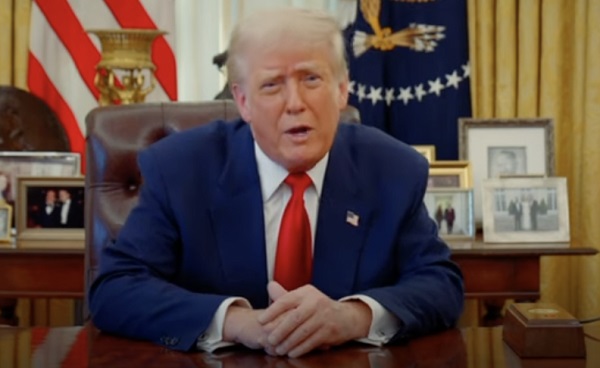Alberta
Province shares plan for school relaunch

From the Province of Alberta
Students returning to school for 2020-21 school yearStudents will return to learning in classrooms across Alberta at the beginning of the new school year. Schools will be ready to welcome students under scenario 1, which is near-normal daily operations with health measures. Alberta’s government has developed a re-entry tool kit to prepare parents and students for what to expect in the new school year. The tool kit includes videos for students explaining some of the health measures, a guide for parents, frequently asked questions, school posters, a self-screening questionnaire in multiple languages, and links to health guidelines.
Under scenario 1, schools will implement a number of public health measures, which include frequent cleaning of surfaces, placing hand sanitizers at school entrances and classrooms, grouping students in cohorts, and planning the school day to allow for physical distancing, which could include staggering start times for classes, recesses and lunches. Additional public health measures may be established prior to September on the advice of the chief medical officer of health in consultation with the education system. In addition, students, staff, parents and school visitors will be expected to use a self-screening questionnaire daily to determine whether they can enter the school.
Successful transition to summer school and child careAlberta’s school re-entry plan works, and already has mitigated risks to students and teachers. Throughout the summer, the Calgary Catholic Separate School Division ran in-person summer school programming in accordance to the guidelines developed and issued by the province. These comprehensive guidelines have mitigated risk, resulting in no COVID-19 outbreaks among teachers or students participating in summer school. Additionally, Alberta has seen a successful reopening of child care centres across the province. Children and staff have safely returned to these centres with no outbreaks occurring. School authority fundingSchool authorities have returned to full funding levels as of July 1, and every school authority in Alberta is receiving a funding increase for the 2020-21 school year – roughly $120 million across the province. A list of funding for every school authority is available here. In addition, the Minister of Education has approved the use of school board reserves, if needed, to help cover local COVID-19-related costs. The total amount of money sitting in school board reserves is $363 million. Accelerated capital school fundingThe province has also provided school boards an additional $250 million to support accelerated capital maintenance and renewal projects, as part of the more than $10 billion infrastructure spending announced in the Alberta Recovery Plan. This funding supports infrastructure enhancements that will help in a COVID-19 learning environment. Seventy-nine school projects totalling $15 million are moving forward with this primary purpose, including upgrades for enhanced hygiene such as hands-free sinks, automatic flush toilets, touchless soap and paper towel dispensers, automatic doors and water bottle filling stations to replace water fountains. New online Student Learning HubA new Student Learning Hub on new.learnalberta.ca is available for parents, students, and teachers to more easily access educational materials to support development of student literacy and numeracy, and provide health and wellness information. The online hub is another resource to support Alberta’s school re-entry plan, with recognition that more online learning resources may be needed during the upcoming school year. Additional resources will also be added throughout the school year. Expanding diploma examsDiploma exams will be offered in every subject in the November and April exam sessions. Expanding the offerings of the diploma exams will support school authorities who are shifting high school programming to a four-semester system as part of their COVID-19 re-entry plan. This shift allows for better cohorting by limiting the number of classes a student is in during a term without affecting total learning time over the course of a year. Personal protective equipmentStudents and staff may wear a mask if they choose to. However, practices such as physical distancing, cohorting, frequent handwashing, staying home when sick and increased cleaning of surfaces will continue to be the priority public health measures. COVID-19 cases at schoolIf a student or staff tests positive for COVID-19, a public health team will investigate to determine when symptoms developed and support the school to minimize transmission. While each case will be addressed based on its unique circumstances, it is anticipated that in most cases only the group of students and staff who came in close contact will likely be required to stay home for 14 days, and not the entire school population. Parents will be notified if a case of COVID-19 is confirmed at school and public health officials will contact those who were in close contact with that person. Transitioning to scenario 2 or scenario 3If there is an outbreak of COVID-19 in a community or school, health officials will work with Alberta Education and impacted school authorities to make any decision to potentially transition to partial in-class learning or at-home learning. Decisions will be based on multiple factors including the number of cases in a community or school and the risk of ongoing transmission. The health guidance for scenario 2 has been updated to allow for a maximum of 20 students per class. |
Alberta
Alberta takes big step towards shorter wait times and higher quality health care

From the Fraser Institute
On Monday, the Smith government announced that beginning next year it will change the way it funds surgeries in Alberta. This is a big step towards unlocking the ability of Alberta’s health-care system to provide more, better and faster services for the same or possibly fewer dollars.
To understand the significance of this change, you must understand the consequences of the current (and outdated) approach.
Currently, the Alberta government pays a lump sum of money to hospitals each year. Consequently, hospitals perceive patients as a drain on their budgets. From the hospital’s perspective, there’s little financial incentive to serve more patients, operate more efficiently and provide superior quality services.
Consider what would happen if your local grocery store received a giant bag of money each year to feed people. The number of items would quickly decline to whatever was most convenient for the store to provide. (Have a favourite cereal? Too bad.) Store hours would become less convenient for customers, alongside a general decline in overall service. This type of grocery store, like an Alberta hospital, is actually financially better off (that is, it saves money) if you go elsewhere.
The Smith government plans to flip this entire system on its head, to the benefit of patients and taxpayers. Instead of handing out bags of money each year to providers, the new system—known as “activity-based funding”—will pay health-care providers for each patient they treat, based on the patient’s particular condition and important factors that may add complexity or cost to their care.
This turns patients from a drain on budgets into a source of additional revenue. The result, as has been demonstrated in other universal health-care systems worldwide, is more services delivered using existing health-care infrastructure, lower wait times, improved quality of care, improved access to medical technologies, and less waste.
In other words, Albertans will receive far better value from their health-care system, which is currently among the most expensive in the world. And relief can’t come soon enough—for example, last year in Alberta the median wait time for orthopedic surgeries including hip and knee replacements was 66.8 weeks.
The naysayers argue this approach will undermine the province’s universal system and hurt patients. But by allowing a spectrum of providers to compete for the delivery of quality care, Alberta will follow the lead of other more successful universal health-care systems in countries such as Australia, Germany, the Netherlands and Switzerland and create greater accountability for hospitals and other health-care providers. Taxpayers will get a much better picture of what they’re paying for and how much they pay.
Again, Alberta is not exploring an untested policy. Almost every other developed country with universal health care uses some form of “activity-based funding” for hospital and surgical care. And remember, we already spend more on health care than our counterparts in nearly all of these countries yet endure longer wait times and poorer access to services generally, in part because of how we pay for surgical care.
While the devil is always in the details, and while it’s still possible for the Alberta government to get this wrong, Monday’s announcement is a big step in the right direction. A funding model that puts patients first will get Albertans more of the high-quality health care they already pay for in a timelier fashion. And provide to other provinces an example of bold health-care reform.
Alberta
Alberta’s embrace of activity-based funding is great news for patients

 From the Montreal Economic Institute
From the Montreal Economic Institute
Alberta’s move to fund acute care services through activity-based funding follows best practices internationally, points out an MEI researcher following an announcement made by Premier Danielle Smith earlier today.
“For too long, the way hospitals were funded in Alberta incentivized treating fewer patients, contributing to our long wait times,” explains Krystle Wittevrongel, director of research at the MEI. “International experience has shown that, with the proper funding models in place, health systems become more efficient to the benefit of patients.”
Currently, Alberta’s hospitals are financed under a system called “global budgeting.” This involves allocating a pre-set amount of funding to pay for a specific number of services based on previous years’ budgets.
Under the government’s newly proposed funding system, hospitals receive a fixed payment for each treatment delivered.
An Economic Note published by the MEI last year showed that Quebec’s gradual adoption of activity-based funding led to higher productivity and lower costs in the province’s health system.
Notably, the province observed that the per-procedure cost of MRIs fell by four per cent as the number of procedures performed increased by 22 per cent.
In the radiology and oncology sector, it observed productivity increases of 26 per cent while procedure costs decreased by seven per cent.
“Being able to perform more surgeries, at lower costs, and within shorter timelines is exactly what Alberta’s patients need, and Premier Smith understands that,” continued Mrs. Wittevrongel. “Today’s announcement is a good first step, and we look forward to seeing a successful roll-out once appropriate funding levels per procedure are set.”
The governments expects to roll-out this new funding model for select procedures starting in 2026.
* * *
The MEI is an independent public policy think tank with offices in Montreal, Ottawa, and Calgary. Through its publications, media appearances, and advisory services to policymakers, the MEI stimulates public policy debate and reforms based on sound economics and entrepreneurship.
-

 Alberta2 days ago
Alberta2 days agoAlberta takes big step towards shorter wait times and higher quality health care
-

 Business2 days ago
Business2 days agoStocks soar after Trump suspends tariffs
-

 COVID-192 days ago
COVID-192 days agoBiden Admin concealed report on earliest COVID cases from 2019
-

 2025 Federal Election1 day ago
2025 Federal Election1 day agoResearchers Link China’s Intelligence and Elite Influence Arms to B.C. Government, Liberal Party, and Trudeau-Appointed Senator
-

 Business2 days ago
Business2 days agoScott Bessent Says Trump’s Goal Was Always To Get Trading Partners To Table After Major Pause Announcement
-

 Business1 day ago
Business1 day agoTimeline: Panama Canal Politics, Policy, and Tensions
-

 COVID-191 day ago
COVID-191 day agoFauci, top COVID officials have criminal referral requests filed against them in 7 states
-

 2025 Federal Election2 days ago
2025 Federal Election2 days agoRCMP memo warns of Chinese interference on Canadian university campuses to affect election






